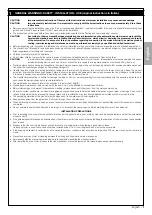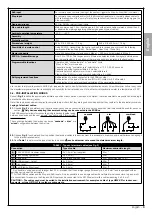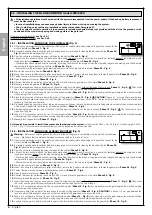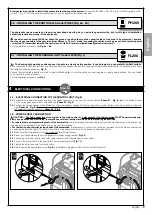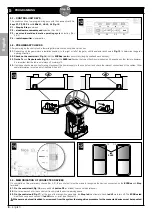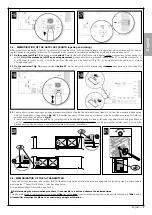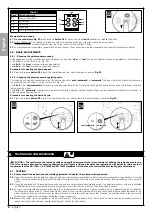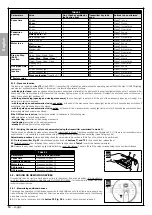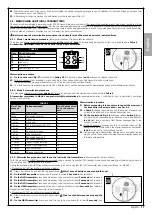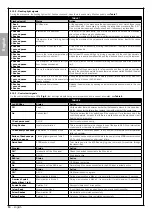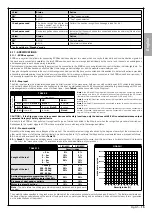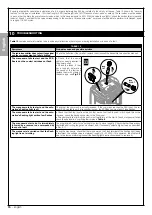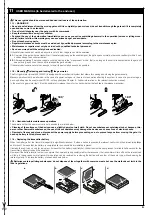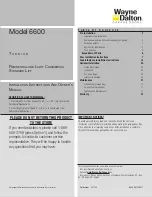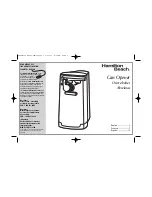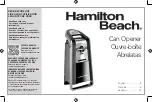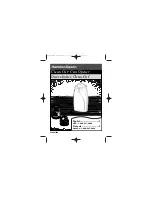
English –
5
English
At this point it is possible to install the accessories that belong to the system:
for photocells PH200 > Par. 3.6 (Fig. 6) - for flashing light FL200
> Par. 3.7 (Fig. 7). For other optional accessories, consult the respective instruction manuals.
3.6 - INSTALLING THE PHOTOCELLS model PH200 (Fig. 6a - 6b)
The photocells can be mounted on the wall as described below (fig. 6a), or inside the gearmotor (fig. 6b); for this type of installation,
consult the instruction manual of the photocells.
• position each photocell 40/60 cm above the ground • position them on the opposite sides of the zone to be protected • position
them as close as possible to the gate (maximum distance = 15 cm) • a tube for passing the cables must be present in the fastening point
• orient the TX transmitter towards the central zone of the RX receiver (allowed misalignment: maximum 5°)
For the installation procedure see
Fig. 6a - 6b.
3.7 - INSTALLING THE FLASHING LIGHT model FL200 (Fig. 7)
• The
flashing light must be positioned near the gate in a clearly visible position. It can be fasted to a horizontal or vertical surface.
•
For connection to the Flash terminal, no polarity needs to be observed; instead for connection of the shielded aerial cable, it is necessary to connect
the cable and sheath as shown in
Fig. 8
.
Choose the most suitable position in which to install the flashing light: it must be positioned near the gate in a clearly visible position. It can be fasted
to a horizontal or vertical surface.
For the installation procedure see
Fig. 7
.
PH200
FL200
4
ELECTRICAL CONNECTIONS
Step
C
4.1 - ELECTRICAL CONNECTION TO THE CONTROL UNIT (Fig. 8)
01.
Perforate the rubber membrane and insert the cables necessary to connect the various devices (
Phase 01 - Fig. 8
): leave the cables at least
40–50 cm long and secure them with cable ties (
Phase 02 - Fig. 8
).
02.
Connect the various devices of the kit and any other components designed for being used on the system (optional and not included in the pack-
age) (
Phase 03 - Fig. 8
):
It is not necessary to observe any polarity, with the exception
of the shielded aerial cable which must be connected with
the cable and sheath as shown in
Phase 03 - Fig. 8
4.2 - POWER SUPPLY CONNECTION
CAUTION! – The final connection
of the system to the mains power or replacement of the cable supplied MUST be performed exclu-
sively by a qualified and electrician, in compliance with local safety standards and the following instructions.
• For operational and programming tests of the automation
, use the cable supplied, inserting the plug into an electrical socket. If the socket is a
long way from the automation, an extension may be used in this phase.
• For the testing and commissioning phase of the automation
, it is necessary to connect the control unit permanently to the mains power supply,
by replacing the supplied cable. To connect the cable to the gearmotor’s control unit, proceed as described below:
01.
Make sure that the gearmotor plug is not plugged into the wall socket.
02.
Disconnect the power cable from the gearmotor’s power supply terminal (
Fig.10
).
03.
Loosen the collar and remove the power cable: replace it with the permanent power cable.
04.
Connect the power cable to the gearmotor’s power supply terminal (
Fig. 11)
.
05.
Tighten the collar to secure the electric cable.
06.
Before closing the gearmotor’s cover (
Fig. 9
) it is possible to programme the control unit (see Chapter 5).
10
11











